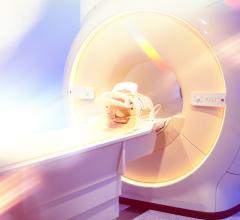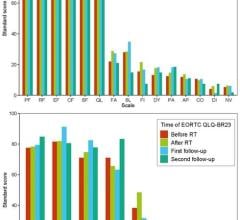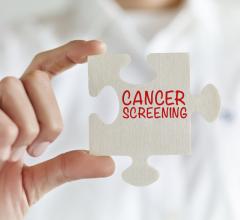
October 29, 2010 – The first clinical study has been initiated to evaluate the use of the Calypso System for tracking lung cancer tumors during radiation delivery, including a new design of the company's implantable Beacon transponder. Calypso Medical Technologies Inc. has developed real-time localization technology used for the precise tracking of tumors. The initial clinical site, Tygerberg Hospital, is affiliated with the University of Stellenbosch, a leading research institution in South Africa located just outside of Cape Town, the same city where the world's first heart transplant took place in 1967. The first implantation of the proprietary anchored Beacon transponders in a patient was performed by professor C.T. Bolliger, director of respiratory research and co-chairman of the division of pulmonology at the University of Stellenbosch.
To accommodate use in lung cancer tumors, the Beacon transponders have been designed to include an anchoring feature that provides stability in the airways of the lung. Currently cleared by the U.S. Food and Drug Administration (FDA) for permanent implantation in the prostate by way of an introducer needle, a delivery system was engineered to allow for implantation in the lung using a standard bronchoscope and proprietary delivery catheter. "The implantation of the three anchored Beacon transponders took only 20 minutes and when combined with the Calypso System, will provide my colleagues in radiation oncology precise information about the location of the tumor," Bolliger said. "Lung tumors move faster than any other tumors in the body so they are particularly difficult to treat using radiotherapy. With Calypso's ability to track this high-velocity repetitive motion, treatment options for lung cancer patients may expand to include earlier and more aggressive radiation treatment."
The goal of radiation therapy is to focus the radiation beam on the tumor while avoiding the irradiation of surrounding healthy tissue, which may cause serious side effects. To account for the motion associated with lung tumors, a treatment margin or envelope of healthy tissue is added around the tumor, which includes all of the possible directions in which the tumor can move as the patient breathes. In order to keep the envelope of healthy tissue being irradiated as small as possible, physicians must be able to accurately and precisely track the location of the tumor. Calypso's technology provides physicians with this information continuously throughout each treatment session. As a result, more radiation is delivered to the tumor. This may improve outcomes and less radiation is delivered to healthy tissue, which may lower the incidence of side effects.
"The five-year survival rate for lung cancer is dismal at just sixteen percent and it has improved little in the past 25 years," said Dr. Gerald E. Paris, MB ChB, senior lecturer, Stellenbosch University and senior specialist in radiation oncology, Tygerberg Hospital. "In order to expand and develop curative high dose radiation therapy delivery in patients for whom surgery is undesirable or impossible, more accurate real-time tracking is essential. Calypso's real-time tumor tracking during respiratory motion permits radiation therapy in significantly more patients who might otherwise be unable to tolerate treatment due to the development of side effects. We've never had real-time tracking information and we are excited to use it to explore new treatment paradigms that may improve the outlook for lung cancer patients."
According to the International Agency for Research on Cancer, lung cancer has been the most common cancer in the world for several decades. In 2008, the most recent year for which statistics are available, lung cancer accounted for 1.38 million deaths worldwide and was the most common cause of death from cancer. Common side effects from radiation therapy include skin irritation, shortness of breath, coughing, fatigue and esophagitis. As the incidence of side effects decreases, the costs associated with treating those side effects also declines. Real-time tracking may permit a clinically significant reduction in side effects, thereby increasing treatment tolerance and enabling delivery of the full radiation dose for more effective treatment. For more information: www.calypsomedical.com


 March 28, 2024
March 28, 2024 








